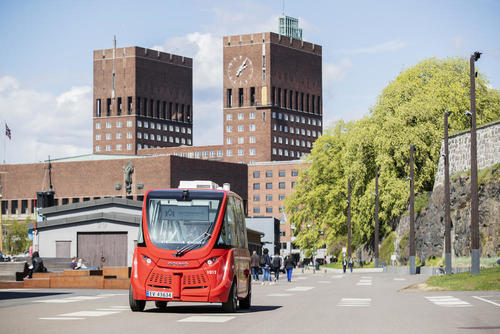A research article about safety, as well as various video clips from the project, is available here.
The "Autobus" project studies the interaction between self-driving buses (AV shuttles) and regular road users in Norway. Specifically, the testing of self-driving buses is currently taking place in three test areas; Forus, Kongsberg and at Akershusstranda in Oslo.
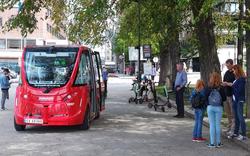
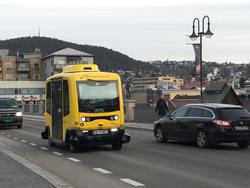
In studying how self-driving buses interact with other road users in real traffic we conduct video observations and analyze the interactions between the self-driving buses and other road users at strategically selected locations along the test routes. In addition to observing traffic behavior and interaction, we conduct interviews and surveys among road users about their expectations, experiences and attitudes towards the self-driving buses.
Interactions will change over time
Based on theories of interaction and behavioral adaptation as well as international experiences with self-driving buses, our hypothesis claims that interactions will change over time.
We distinguish between three phases:
- Initially we expect other road users to be reserved and careful in their interactions with the self-driving bus, and generally yield when interacting with the bus.
- After some time (1-3 months) we expect other road users to take advantage of the fact that the bus always stops when something comes in its way. Hence, we expect to find that other road users going first at intersections, even if the bus has the right of way.
- The poor negotiating power of the self-driving bus makes it a “weak” road user. Moreover, the passengers (elderly, people with special needs) may be considered as “weak”. We expect that this weakness can elicit traditional norms not to “bully” the weak, hence not to bully the self-driving bus. Consequently, in a third phase, we expect cyclists to yet again be more considerate and to yield to the self-driving bus.
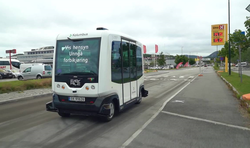
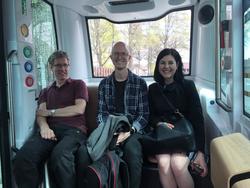
In order to test our hypotheses, video analyses of interactions in real-life traffic and field surveys have been carried out at Forus, Kongsberg and in Oslo. Preliminary results show that because the AV shuttles travel at slow speed, they tend to create queues and are often overtaken by cars and by bicycles. A common problem at all sites is that other road users tend to cut in to closely after overtaking, forcing the AV shuttle to abruptly brake and stop. Field survey results indicate that cyclists indeed change their behaviour over time and yield less after a few months of experience with the bus. These results are presented at the International Cycling Safety Conference in Brisbane in November 2019.
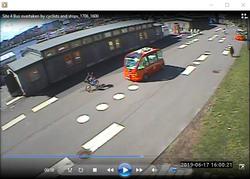
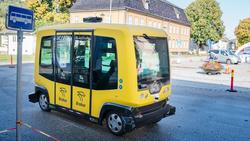
The project is a collaboration between Norwegian stakeholders, bus operators, industrial partners and national and international research partners Vias institute, Lund University, TU Delft. The project is funded by the Research Council of Norway, the Norwegian Public Roads Administration, Ruter, Kolumbus and Buskerud county.
Torkel Bjørnskau (Institute of Transport Economics, Norway) is the project manager.
The projects runs until 2022.

